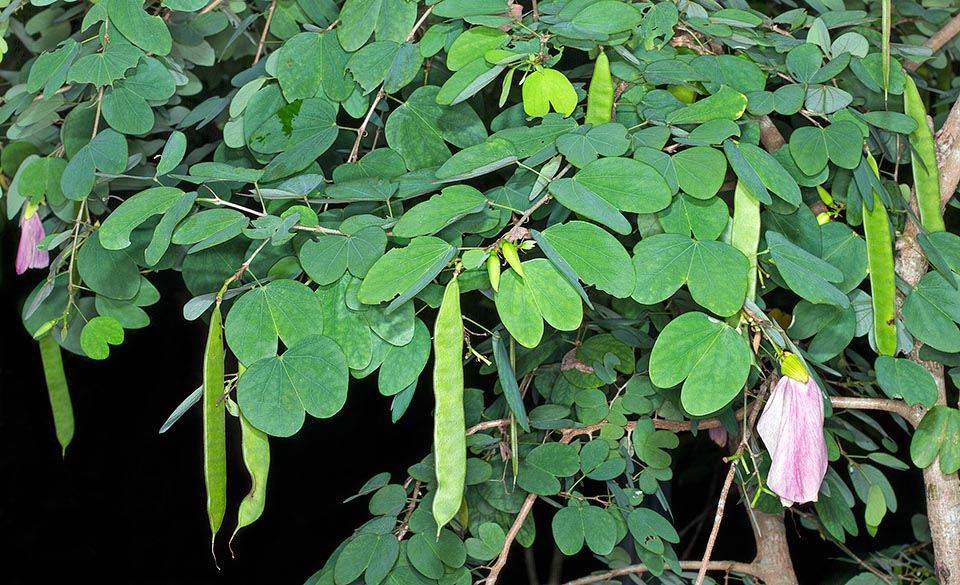Family : Fabaceae

Text © Pietro Puccio

English translation by Mario Beltramini
The exact place of origin is unknown, it is present in nature in Africa (Angola, Democratic Republic of Congo, Ethiopia, Kenya, Somalia, South Africa, Tanzania and Zimbabwe) and Asia (Bangladesh, India and Sri Lanka) where it grows in the forests and thickets up to about 1000 m of altitude.
The genus is honoured to the brothers Jean (1541-1613) and Gaspard (1560-1624) Bauhin, Swiss botanists, for the bilobed leaves; the specific name is the Latin adjective “tomentosus, a, um” = tomentose, covered in hairs, with reference to the tomentum present in the lower page of the leaves.
Common names: bell bauhinia, yellow bauhinia, yellow tree bauhinia, St. Thomas tree (English); asundro, kanjani, mandarai, petan, phalgu, pita, kovidaara, usamaduga (India); kaha pethan, kat-atti, triviat putrum (Sri Lanka); bosbeesklou (South Africa); ogal (Uganda).

Native, it seems, to tropical Africa and Asia, Bauhinia tomentosa is a shrub or small tree much ramified even 4 m tall © Giuseppe Mazza
It reproduces by seed, previously immersed in water for one day, in draining organic loam maintained humid, but without stagnations, at the temperature of 24-26 °C, with germination times of 3-6 weeks and first blooming starting from the third year, and by cutting.
Much decorative shrub, ideal for small gardens, suitable for tropical, subtropical and marginally temperate-warm climate zones, where temperatures just under the 0 °C are short lasting exceptions, as isolated specimen or for hedges; with proper prunings may be easily transformed in a small tree. It requires full sun, or at the most a slight shade, perfectly draining soils, preferably acidic or neutral, regular waterings, even if well rooted it can bear short dry periods, and fertilizations, from spring to autumn, with a a product balanced with microelements.

Fruits and withered flowers of other colour. The yellowish corollas of Bauhinia tomentosa in fact last only one day and turn sagging late afternoon to mauve pink. The flowers enter daily the Hindu religious rituals. Various parts of the plant show bioactive principles of possible interest to the official pharmacopoeia © Giuseppe Mazza
The wood, of dark brown colour, is particularly hard, but due to the reduced dimensions is not commercially utilizable. All parts of the plant, toxic if ingested, are utilized since remote times in the traditional medicine, Indian particularly, for various pathologies. Laboratory studies have evidenced the presence in the plant of numerous bioactive compounds with antioxidant, antiinflammatory, antimicrobial and anti hyperglycemic activity of possible interest to the official pharmacopoeia.
Finally, the flower is utilized in the Hindu daily rituals and the plant is always present close to the temples and in the family gardens of the followers of Hinduism.
Synonims: Alvesia bauhinioides Welw. (1859); Bauhinia tomentosa var. glabrata Hook. f. (1866); Bauhinia wituensis (1899); Alvesia tomentosa (L.) Britton & Rose (1930); Pauletia tomentosa (L.) A. Schmitz (1973).
→ To appreciate the biodiversity within the family of FABACEAE please click here.
